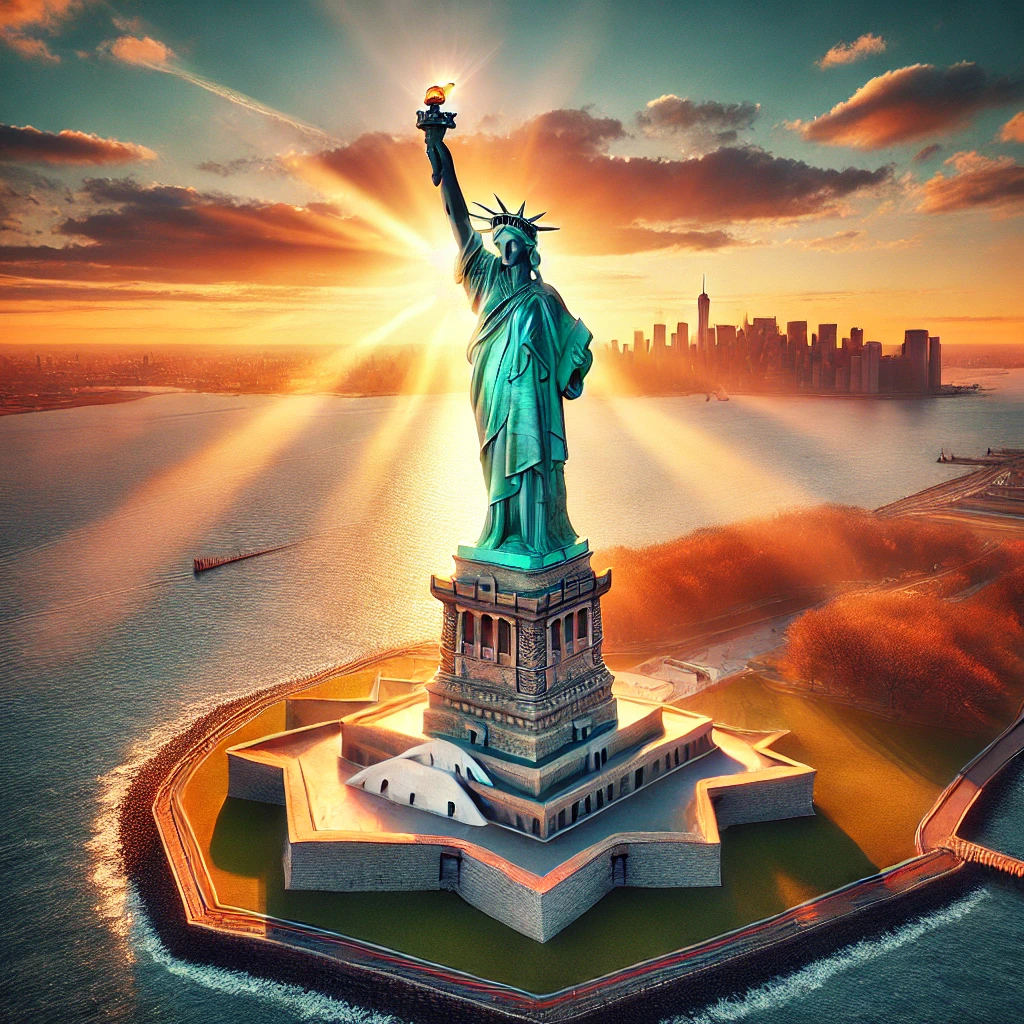Physical Address
304 North Cardinal St.
Dorchester Center, MA 02124
Physical Address
304 North Cardinal St.
Dorchester Center, MA 02124

Discover the history of the Statue of Liberty, a symbol of freedom and democracy, from its conception in 1865 to its dedication in 1886. Learn about its design by Frédéric Auguste Bartholdi, the engineering by Gustave Eiffel, and its cultural significance as a beacon for immigrants. Explore how the Statue of Liberty became a UNESCO World Heritage Site, its construction, symbolism, and restoration efforts.
The Statue of Liberty is one of the most recognizable landmarks in the world, standing as a powerful symbol of freedom, democracy, and international friendship. A gift from France to the United States, the statue commemorates the centennial of American independence and celebrates shared democratic ideals. From its conceptualization in 1865 to its dedication in 1886, the Statue of Liberty has remained an enduring icon of liberty, welcoming millions of immigrants to the United States.
This comprehensive guide explores the history, design, construction, symbolism, and significance of the Statue of Liberty, incorporating SEO-optimized content to maximize visibility and engagement.
The idea for the Statue of Liberty was first proposed in 1865 by Édouard de Laboulaye, a French historian and political thinker. A strong supporter of American democracy, Laboulaye envisioned the statue as a gift to the United States to celebrate the abolition of slavery and the country’s centennial in 1876.
French sculptor Frédéric Auguste Bartholdi was selected to design the monument. Inspired by classical art, Bartholdi based the Statue of Liberty on Libertas, the Roman goddess of freedom. The statue was envisioned as a colossal figure, holding a torch to symbolize enlightenment and a tablet inscribed with “JULY IV MDCCLXXVI” (July 4, 1776), the date of the U.S. Declaration of Independence.
While Bartholdi focused on the external aesthetics, the statue’s internal structure was engineered by Gustave Eiffel, who would later design the Eiffel Tower. Eiffel developed an innovative iron framework using a flexible curtain-wall design, allowing the statue to withstand strong winds and weathering.
Construction of the Statue of Liberty began in 1875 in France. Several key components, including the torch-bearing arm, were displayed at exhibitions in Philadelphia (1876 Centennial Exposition) and New York (Madison Square Park, 1876-1882) to raise funds and generate excitement.
Once completed in 1884, the Statue of Liberty was disassembled into 350 pieces and packed into 214 wooden crates for shipment. The pieces arrived in New York Harbor on June 17, 1885, aboard the French ship Isère.
While France financed the statue’s construction, the United States was responsible for building the pedestal on Bedloe’s Island (now Liberty Island). However, raising the $300,000 needed for the pedestal proved challenging.
Newspaper publisher Joseph Pulitzer launched a campaign in The New York World, calling on Americans to contribute. Over 120,000 people—many donating less than a dollar—raised $102,000 in just five months, ensuring the pedestal’s completion.
The Statue of Liberty was officially dedicated on October 28, 1886, with a ceremony led by President Grover Cleveland. The event featured a naval parade, speeches, and the first-ever ticker-tape parade in New York City history.
The Statue of Liberty’s torch represents enlightenment, guiding people toward freedom and democracy.
Often overlooked, the broken chains at Lady Liberty’s feet symbolize the abolition of slavery, reinforcing her message of liberty and justice for all.
In 1883, poet Emma Lazarus wrote The New Colossus, which was inscribed on the pedestal in 1903. It famously reads:
“Give me your tired, your poor,
Your huddled masses yearning to breathe free.”
This verse cemented the Statue of Liberty’s role as a beacon for immigrants.
Between 1892 and 1954, over 12 million immigrants passed through Ellis Island, with the Statue of Liberty as their first glimpse of America. For many, Lady Liberty represented hope, opportunity, and a new beginning.
In 1924, the Statue of Liberty was designated a National Monument by President Calvin Coolidge.
Recognized for its universal cultural significance, the Statue of Liberty became a UNESCO World Heritage Site in 1984.
The Statue of Liberty underwent extensive restorations, including:
The Statue of Liberty stands as an enduring icon of freedom, democracy, and hope. From its conception in 1865 to its dedication in 1886 and continued preservation, the statue remains one of the most recognizable landmarks in the world.
A symbol of America’s core values, the Statue of Liberty continues to welcome visitors from around the world, reminding us of the power of liberty and the importance of democracy.
The Statue of Liberty was a gift from France, proposed by Édouard de Laboulaye in 1865 and designed by Frédéric Auguste Bartholdi.
The statue’s copper exterior oxidized over time, creating the green patina that protects it from corrosion.
The tablet reads “JULY IV MDCCLXXVI”, representing July 4, 1776, the date of the Declaration of Independence.
It was dedicated on October 28, 1886, by President Grover Cleveland.
The Statue of Liberty remains a powerful testament to freedom and democracy, welcoming millions to the United States and inspiring generations to come.
[…] To explore the full history of the Statue of Liberty, including its construction, symbolism, and cultural significance, visit the VeroFox blog on the Statue of Liberty. […]